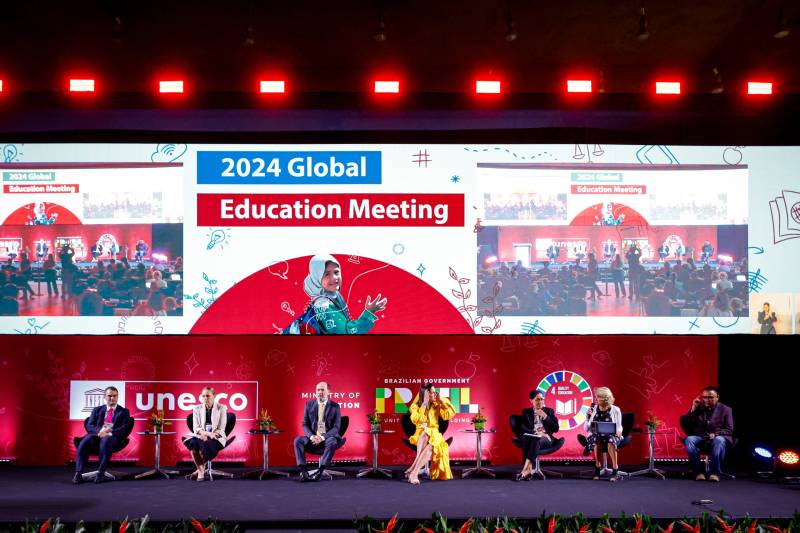Fortaleza, Brazil – A panel of distinguished school leaders from around the world sat on a giant stage earlier this month and listened to a depressing list of data points, from vast spending inequities to tales of lagging student performance. There wasn’t much hopeful news.
For starters:
- By 2030, an estimated 300 million children and young people will still lack basic numeracy and literacy skills.
- Four in 10 countries spend less than 15 percent of their total public expenditure and less than 4 percent of their gross domestic product on education.
- Some 251 million children and youth worldwide are still not in school, most of them poor and living in sub-Saharan Africa.
- For every $1 spent per child on education in the world’s poorest country, $100 is spent in the richest.
While the conversation clearly focused on a continuing worldwide crisis in education, the UNESCO conference I participated in was different. It emphasized a topic of huge importance to improving student outcomes, and coincided with the release of a report detailing how effective leaders can make a huge difference in the lives of children.
“We are all so different, but we are also uniquely alike. None of us have enough resources,” said Ryan T. Chee, the principal of Leupp Elementary School, the only school on the Diné reservation, as the Navajo Nation knows its people. It was Chee’s first time out of the U.S., and he began his remarks by addressing the crowd in his native Navajo language.
I had the privilege of moderating a session with Chee, along with officials from UNESCO, a mayor from Brazil and education ministers from Ecuador and the Democratic Republic of Congo, who spoke of small victories in improving student performance, against vastly different obstacles.


